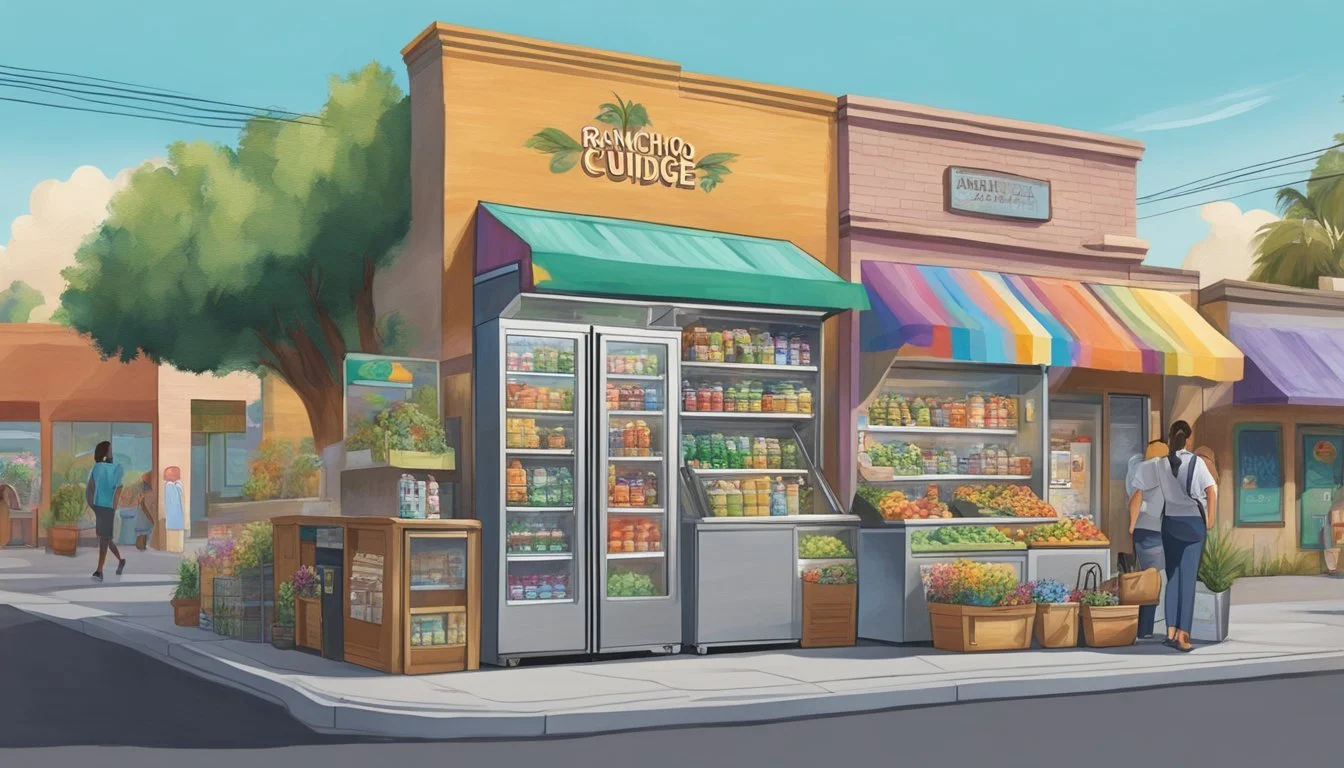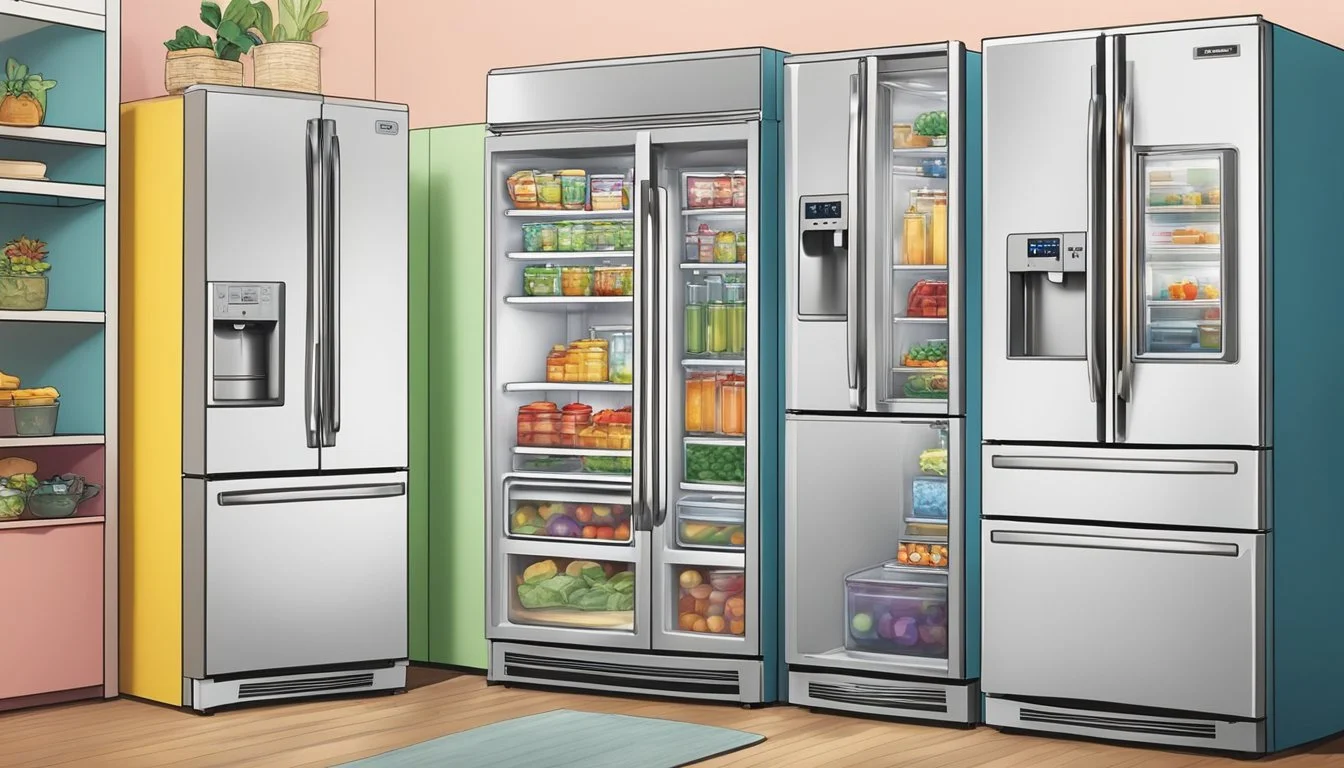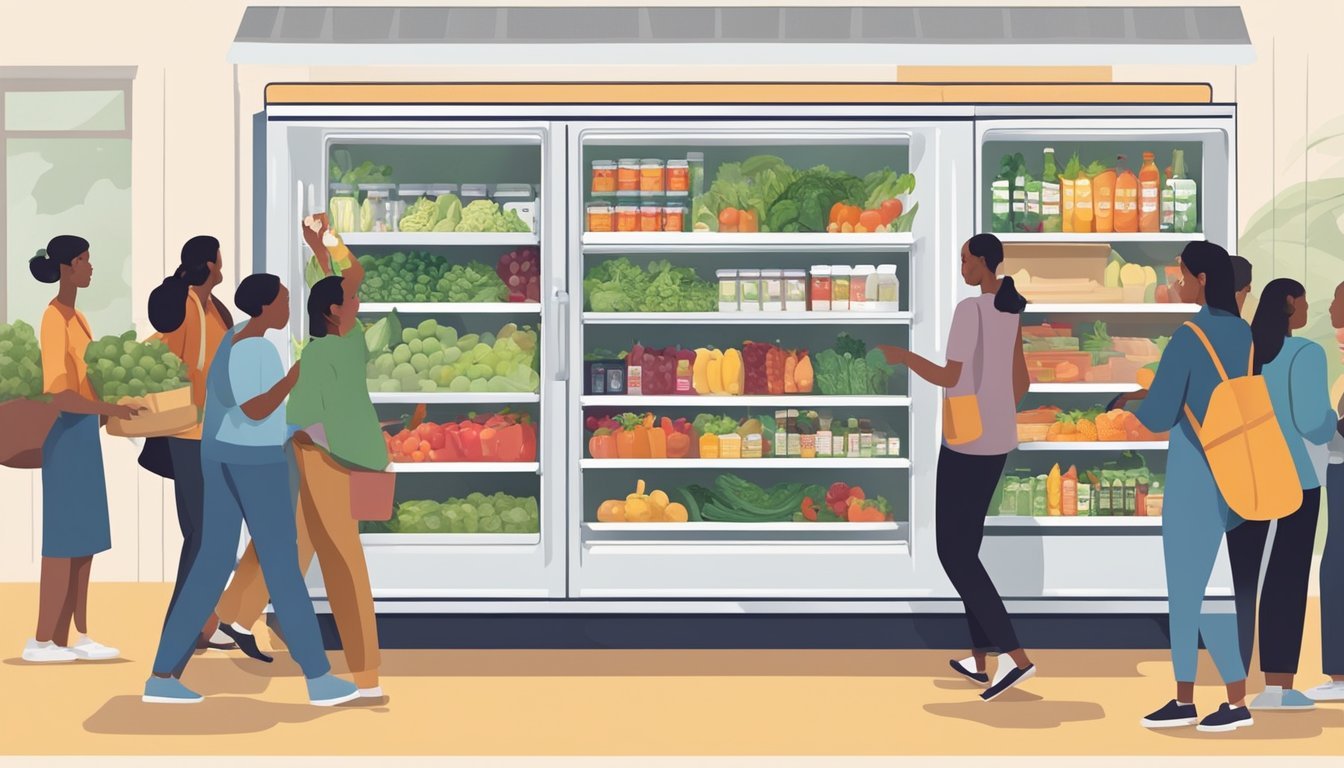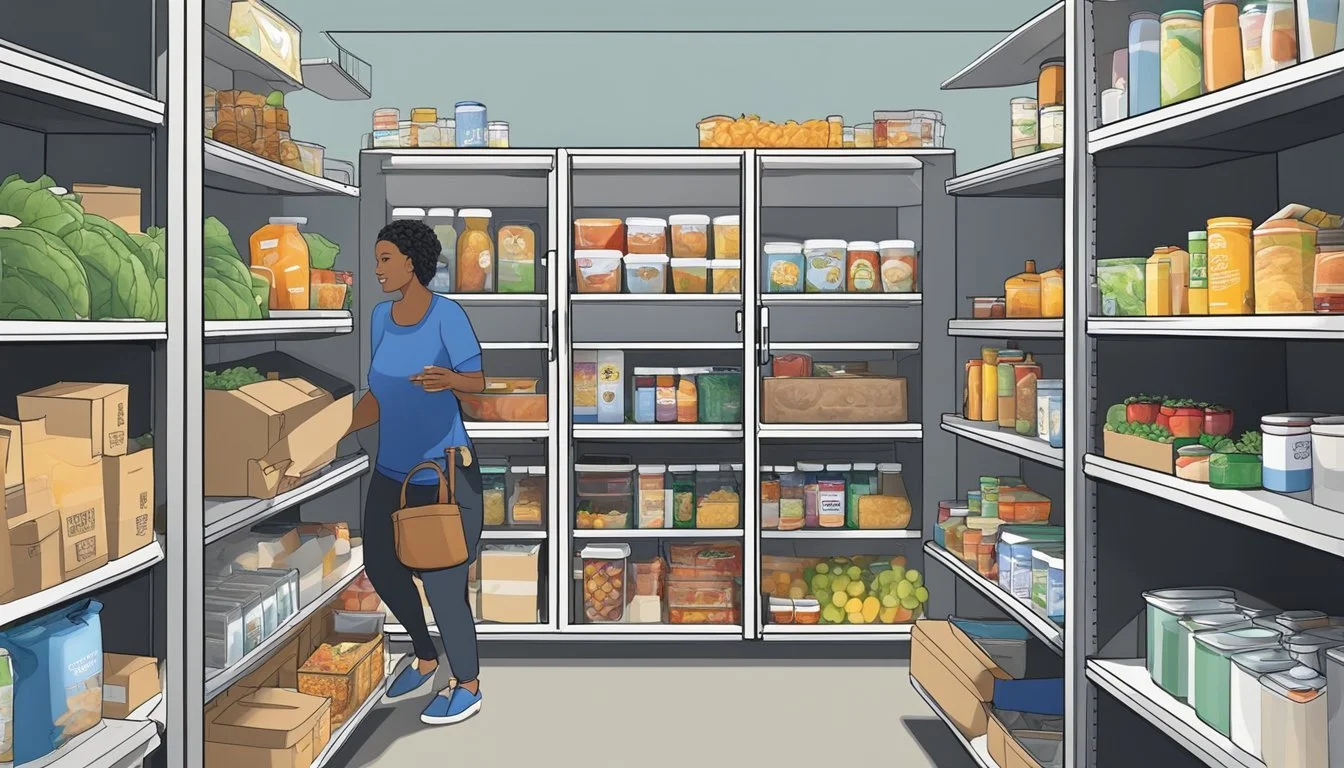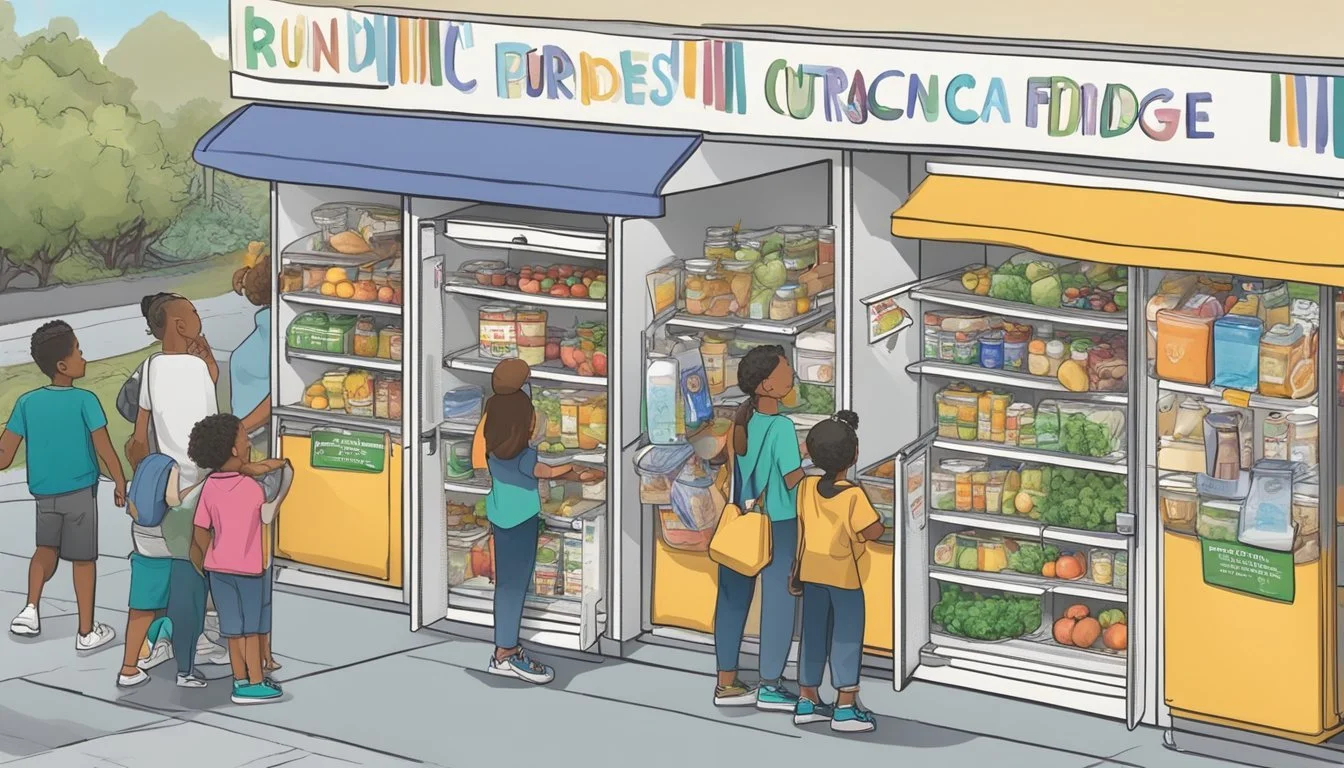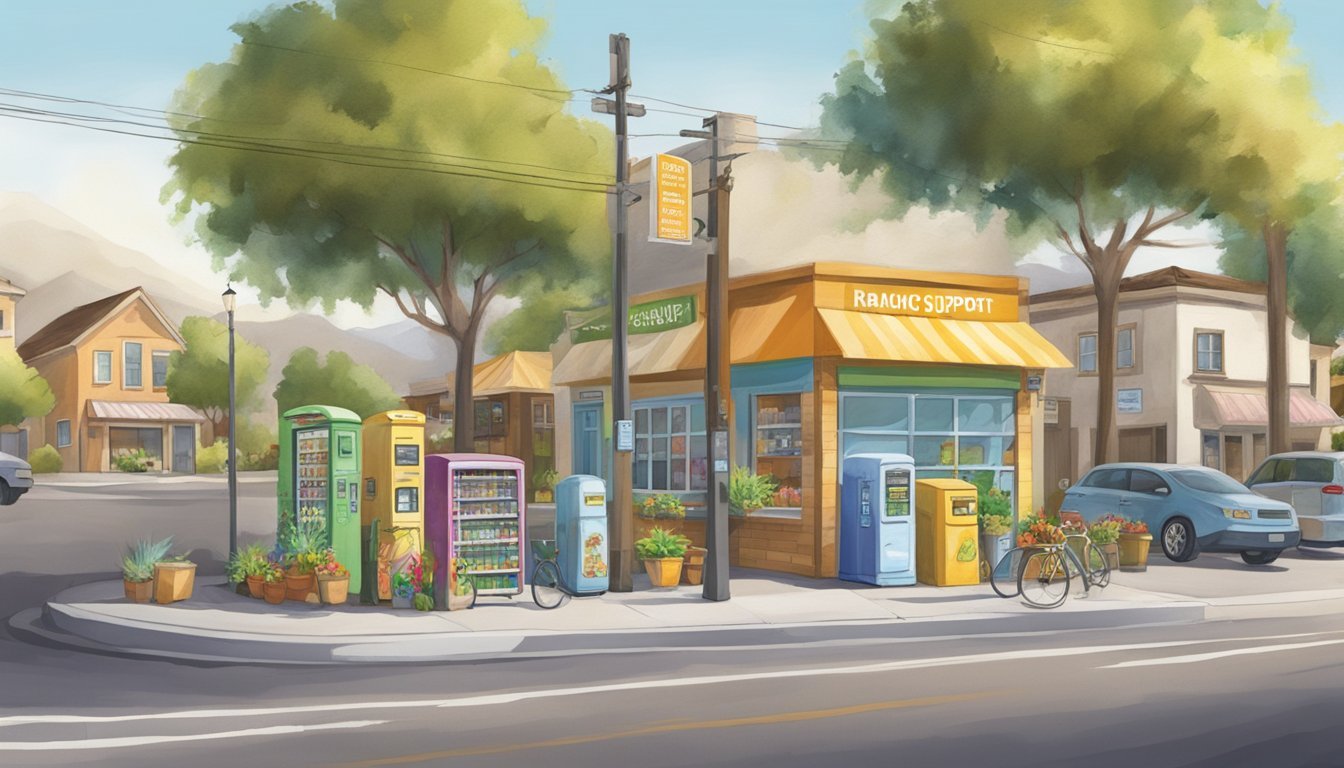Rancho Cucamonga, CA Community Fridge
Nourishing Neighborhood Unity
In the heart of Rancho Cucamonga, an innovative approach to communal sharing and support manifests through the installation of a Community Fridge. This initiative is part of a growing global movement aimed at combating food insecurity and reducing waste. The fridge operates on simple yet impactful principles: take what you need and leave what you can. It provides a space for residents to share surplus food and for those in need to access fresh groceries and prepared meals without any barriers to entry.
The Community Fridge in Rancho Cucamonga is more than just a repository for food; it symbolizes community solidarity and collective responsibility. Local businesses, farmers, and individuals contribute food items, while volunteers maintain the space, ensuring that the offerings are safe and fresh for consumption. This effort not only aids in alleviating hunger but also strengthens the bonds within the community, fostering a spirit of giving and shared well-being.
Accessibility is a key component of the Community Fridge’s design. Strategically positioned within reachable distance for most residents of Rancho Cucamonga, it is accessible seven days a week, making it easy for people to contribute or collect items at their convenience. In this way, the Community Fridge stands as a testament to the town's commitment to caring for all of its inhabitants, exemplifying the power of grassroots initiatives to effectuate tangible change.
Background of Community Fridges
Community Fridges, often called "freedges," offer a novel approach to food sharing and are a growing trend across many urban areas, including the City of Rancho Cucamonga. These refrigerators are set up in publicly accessible spaces, allowing residents to give or take food items as needed with no strings attached. The concept relies on the community's generosity and operates on a simple premise: take what you need, leave what you can.
In Rancho Cucamonga, the movement is more than just about combating hunger; it's a collective effort to strengthen the community bonds and reduce food waste. The experience of visiting a Community Fridge can be a testament to the city's commitment to social wellbeing and sustainability. These fridges are typically stocked with a variety of items:
Fresh produce
Non-perishable foods
Basic necessities
They work on the honor system, and all community members, irrespective of their income level, are welcome to participate. The Rancho Cucamonga Community Fridge project embodies solidarity where the fridge serves as more than a food source—it becomes a hub of community interaction and support.
From a logistical standpoint, these fridges are maintained by volunteers who ensure cleanliness and safety of the stored items. The success of Rancho Cucamonga's initiative mirrors the wider movement gaining traction worldwide, illustrating that community fridges can thrive in suburban settings as well as bustling metro areas.
Choosing the Right Location
When establishing a community fridge in Rancho Cucamonga, the location's accessibility, visibility, and safety are pivotal to its success and usability.
Accessibility
The chosen location must be easily reachable by all members of the community. This includes considering public transportation routes and the presence of pedestrian pathways. A location near the city center or popular community spots, such as markets or parks, ensures that the community fridge is convenient for a higher number of residents.
Visibility
Visibility not only affects how many people use the fridge but also how many contribute to it. Ideally, the fridge should be placed in a well-trafficked area, such as a main street or near public amenities, where it's easily seen by passersby. This increases the likelihood of the community fridge being noticed and regularly stocked and used.
Safety
Safety is paramount. It implies selecting a location within a well-lit area that’s monitored or naturally supervised by local businesses and residents. Additionally, the fridge should be installed on a stable, flat surface to mitigate any risk of tipping or electrical hazards. The community fridge should also be in an area that does not obstruct traffic or violate any city bylaws of Rancho Cucamonga.
Types of Fridges Used
In the Rancho Cucamonga, CA Community Fridge initiative, various refrigeration appliances cater to the needs of food storage and accessibility. Each type of appliance is selected with the intention of providing the best preservation and convenience to the community.
Full-Size Refrigerator
Brand and Model: Full-size refrigerators provided by the initiative are primarily sourced from local donations and responsible refurbishment centers. These models typically feature spacious interior compartments and are designed for long-term storage of perishable goods.
Key Features: They often come equipped with adjustable shelves, crispers for fruits and vegetables, and multiple door bins. Energy efficiency is a common criterion for the selection of these refrigerators to ensure cost-effectiveness and environmental consideration.
Beverage Fridge
Functionality: Beverage fridges are a specialized storage solution focused on maintaining the ideal temperatures for drinks. These compact fridges are utilized within the community fridge project to separate beverages from food items, enhancing organization and accessibility.
Advantages: The main advantage of having separate beverage fridges is the ability to provide colder temperatures optimal for drinks without affecting the more moderate temperature settings needed for general food preservation.
Microwave and Other Appliances
Microwave Usage: Microwaves accompany refrigeration units in the community fridge locations to provide immediate heating options. This allows individuals to not only collect food but also have it ready to eat, enhancing the utility of the community fridge project.
Assortment of Appliances: In addition to microwaves, other small appliances are sometimes available dependent on space and donations. These appliances might include toasters or portable cooktops, further supporting food preparation needs.
The refrigeration and appliance types used by the Rancho Cucamonga, CA Community Fridge are carefully chosen to support the dual purposes of food preservation and convenience—the hallmarks of this community-driven effort.
Maintaining a Community Fridge
Maintaining a community fridge in Rancho Cucamonga, CA, involves thorough attention to cleanliness, temperature control, and food restocking. These practices ensure the service provided by the fridge remains of high quality and the food is safe from heat spoilage.
Regular Cleaning
Frequency and Schedule:
Daily: Wipe surface areas, handle frequent touchpoints.
Weekly: Deep clean inside the fridge, removing all items, washing shelves.
Cleaning Products:
Use food-safe disinfectants.
Avoid strong chemicals that might contaminate food.
Temperature Monitoring
Monitoring Equipment:
Use a digital or analog thermometer.
Check temperature readings at least twice a day.
Optimal Temperature Range:
Maintain at 35°F to 38°F to ensure food safety.
Restocking Procedures
Donation Guidelines:
Only accept unexpired, non-perishable items.
Fresh produce should not show signs of spoilage.
Restocking Routine:
First-in, first-out method (FIFO) to rotate stock.
Remove items past their use-by date immediately.
Donation Guidelines
When considering donations for the Rancho Cucamonga Community Fridge, donors should adhere to specific guidelines to ensure that the items contributed are suitable and safe for recipients. It's important to remember that what one gives directly impacts the health and well-being of those in need.
Acceptable Food Items
The community fridge accepts a variety of fresh food items that are necessary for nutritious meals. Donations should include:
Fresh fruits and vegetables
Breads and pastries (within their freshness date)
Dairy products (properly refrigerated up to the point of donation)
Fresh eggs (ensure they are clean and without cracks)
Items must be unopened and within their use-by dates. Homemade food is discouraged due to potential health risks.
Non-Perishable Items
Non-perishable items are crucial for food security as they have a longer shelf life. Donors should consider the following for the community kitchen and cabinets:
Canned goods (vegetables, fruit, beans, soup, meat)
Dry goods (rice, pasta, lentils, oats)
Packaged snacks (nuts, dried fruit, granola bars)
Donations should be in their original, sealed packaging to prevent contamination.
Hygiene Standards
Hygiene is paramount in the donation process, especially for items destined for the bathroom and kitchen. All donors must ensure:
The expiration date is clearly visible and not surpassed.
Packaging is intact, without any signs of damage or tampering.
Freshness of perishable items is maintained, ideally in a cooler or insulated bag during transit.
Following these guidelines helps maintain a high standard of safety and respects the dignity of all who rely on the Rancho Cucamonga Community Fridge.
Community Impact
The installation of a community fridge in Rancho Cucamonga, CA, has marked a significant step forward in addressing critical needs like hunger and food insecurity, while simultaneously fostering community involvement and environmental sustainability.
Local Involvement
Residents of Rancho Cucamonga have demonstrated substantial support for the community fridge initiative. People from all walks of life, including local businesses and individual contributors, actively participate in maintaining and stocking the fridge. It's a collective experience where the entire community comes together, embodying a sense of unity and shared responsibility.
Volunteer Opportunities
Volunteers play a crucial role in the success of the community fridge. They manage the day-to-day operations, ensuring the fridge is clean and the food provided is safe for consumption. Service opportunities for individuals and groups include sorting and stocking donated food items, cleaning the fridge, and conducting community outreach to raise awareness about the resource.
Individuals can sign up for shifts to monitor and restock the fridge.
Groups and organizations can organize food drives or offer educational workshops on nutrition and food conservation.
Reducing Food Waste
One of the primary goals of the community fridge is to reduce food waste by redistributing excess food to those who need it. This initiative encourages residents to share what they have and to reduce the ecological footprint of food waste.
Before: Large quantities of perfectly good food thrown away.
After: Food redirected to the community fridge for better use.
By offering a place where individuals can both donate and take food, the fridge operates as a hub of environmental stewardship and community service, promoting sustainability within Rancho Cucamonga.
Safety and Sanitation Protocols
The Community Fridge in Rancho Cucamonga, CA, adheres to strict safety and sanitation protocols to ensure the quality and safety of the food shared within the community. These measures are designed to provide a high-class experience for all users while maintaining public health standards.
Pest Control
To prevent contamination and ensure the sanitary state of the community fridge, pest control measures are in place. The fridge is routinely checked for signs of pests, and professional pest control services are employed to address any infestations immediately.
Check Frequency: Monthly inspections
Actionable Steps:
Sealing gaps and entry points
Scheduling professional pest control treatments
Food Safety Training
Volunteers and managers of the community fridge receive food safety training. This training includes handling, storage, and distribution practices to avoid foodborne illnesses.
Training Highlights:
Proper handwashing techniques
Temperature control for various food types
Cross-contamination prevention
Regular Inspections
The fridge undergoes regular inspections to maintain a high standard of cleanliness and function. Inspections ensure that storage guidelines are adhered to and that the appliance operates at optimal temperatures.
Inspection Aspects:
Cleanliness: Checking and cleaning surfaces, interiors, and exteriors
Temperature: Verifying fridge and freezer temperatures
Stock Rotation: Ensuring older items are used first to prevent spoilage
By implementing these focused protocols, the community fridge initiative in Rancho Cucamonga provides a reliable and safe resource for residents to access and share food.
Outreach and Education
Rancho Cucamonga is a city that recognizes the importance of outreach and education as part of its Community Fridge initiative. This effort not only addresses food insecurity but also educates residents about sustainable practices and community involvement.
Workshops and Classes
The city offers workshops and classes designed to provide residents with practical skills and knowledge relevant to the Community Fridge program. They cover a range of topics:
Sustainable Food Practices: Participants learn how to minimize food waste and the benefits of sharing resources.
Health and Nutrition: Classes focus on preparing healthy meals from the items available in the community fridge.
Public Awareness Campaigns
Rancho Cucamonga conducts public awareness campaigns to increase visibility and support for the Community Fridge. These campaigns utilize various methods:
Social Media Outreach: Regular posts on local Facebook and Instagram accounts inform followers about fridge locations and stocked items.
Flyers and Posters: Distributed in high-traffic areas to catch the attention of residents and encourage their participation.
Partnership Opportunities
The city actively seeks and cultivates partnership opportunities to enhance the efficiency and impact of the Community Fridge:
Local Businesses: Engaging businesses for regular food donations or sponsorships.
Non-profit Organizations: Collaborating with local non-profits to expand services and reach more community members in need.
Building a Sustainable Model
A sustainable model for Rancho Cucamonga's Community Fridge hinges on robust fundraising efforts, broad community support, and detailed long-term planning. These components ensure that the service offered by the Community Fridge is both impactful and enduring.
Fundraising Strategies
To finance the Community Fridge service, diverse fundraising strategies are crucial. Key approaches include:
Local Business Sponsorships: Securing financial support from businesses that prioritize sustainability and community engagement.
Grants: Applying for government and non-profit grants dedicated to environmental sustainability or food security initiatives.
Public Fundraising Campaigns: Organizing campaigns via social media and local events to encourage small donations from a wide population base.
Community Support
Community involvement forms the backbone of the Community Fridge's success. Different aspects of community support include:
Volunteer Recruitment: Enlisting local residents to maintain and stock the fridge regularly.
Awareness Campaigns: Hosting educational events and workshops to inform the community about the benefits and proper use of the Community Fridge.
Local Collaboration: Partnering with farmers' markets, food banks, and educational institutions to pool resources and knowledge.
Long-Term Planning
To ensure longevity, comprehensive planning is essential, including:
Sustainability Measures: Implementing solar power technology to reduce energy consumption.
Expansion Goals: Setting measurable targets for the growth of the Community Fridge network within the city.
Continuous Improvement: Regularly evaluating performance against set benchmarks to adapt strategies and address emerging community needs.
Legal Considerations and Compliance
When establishing a Community Fridge service in the City of Rancho Cucamonga, organizers must adhere to certain legal standards to ensure both compliance and community safety. Here are some of the key legal areas they must consider:
Zoning Laws: The City of Rancho Cucamonga has specific zoning ordinances that regulate land use. Organizers must ensure their community fridge locations comply with these local regulations.
Health and Safety Regulations: A community fridge must meet health and safety standards outlined by local health departments. It should be regularly cleaned and maintained to prevent foodborne illnesses.
Liability Protection: Organizers should consult legal experts to understand potential liabilities and secure appropriate insurance to mitigate risks associated with food distribution.
Permits and Licensing: Although not always necessary for non-profit services, some form of permission or licensing might be required, particularly if the service involves the preparation or handling of food.
Area of Compliance Requirements Zoning Laws Adherence to local zoning ordinances Health and Safety Compliance with health and safety codes Liability Acquisition of liability insurance Permits and Licensing Necessary permits for operations
The City of Rancho Cucamonga Municipal Code provides guidance on these regulations, and it is crucial for any community service including a community fridge project to adhere to these legal requirements. Additionally, organizers may benefit from consulting the updated legal Q&A published by legal centers specializing in community fridges, to ensure all considerations are fully addressed.



